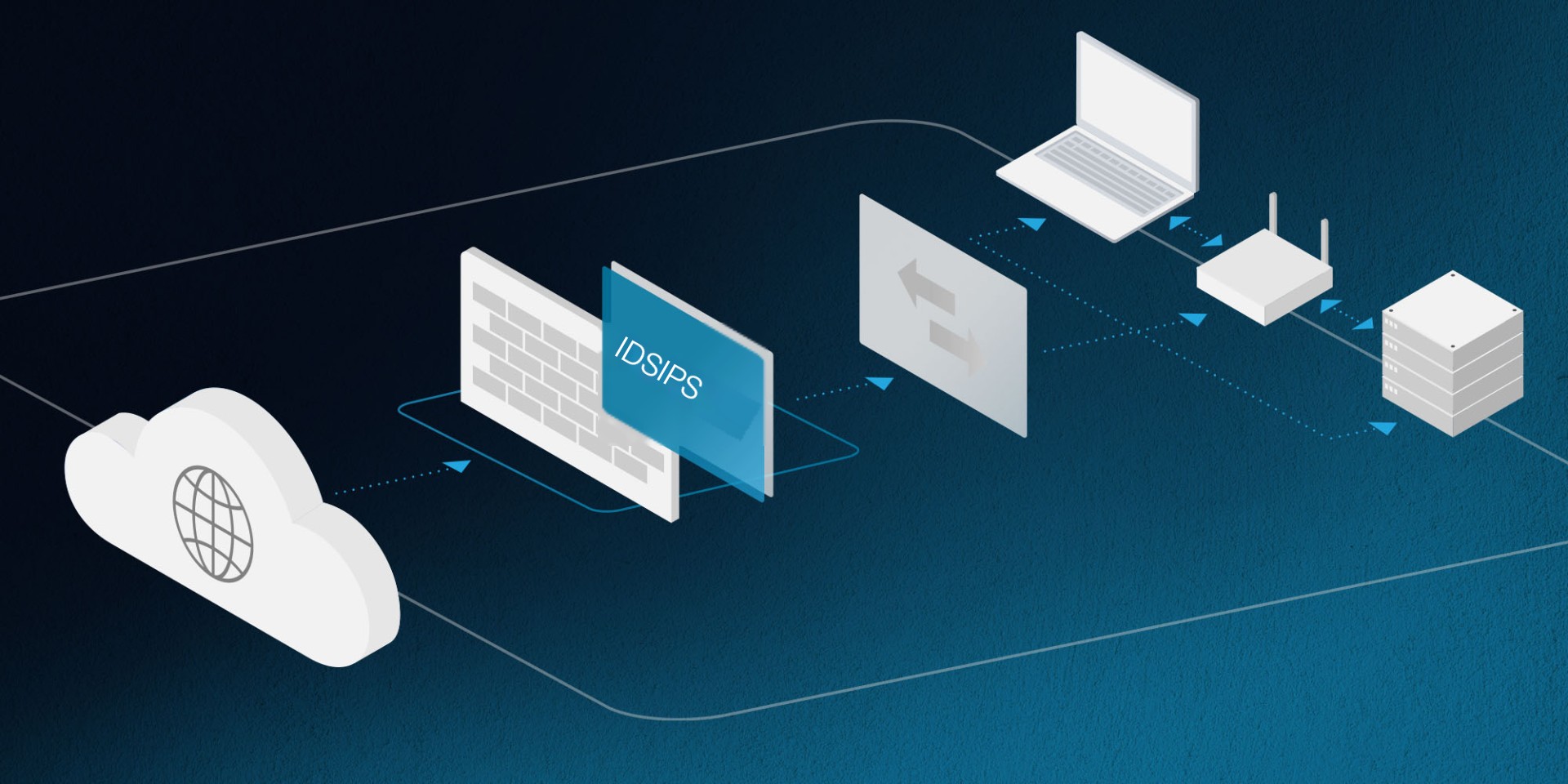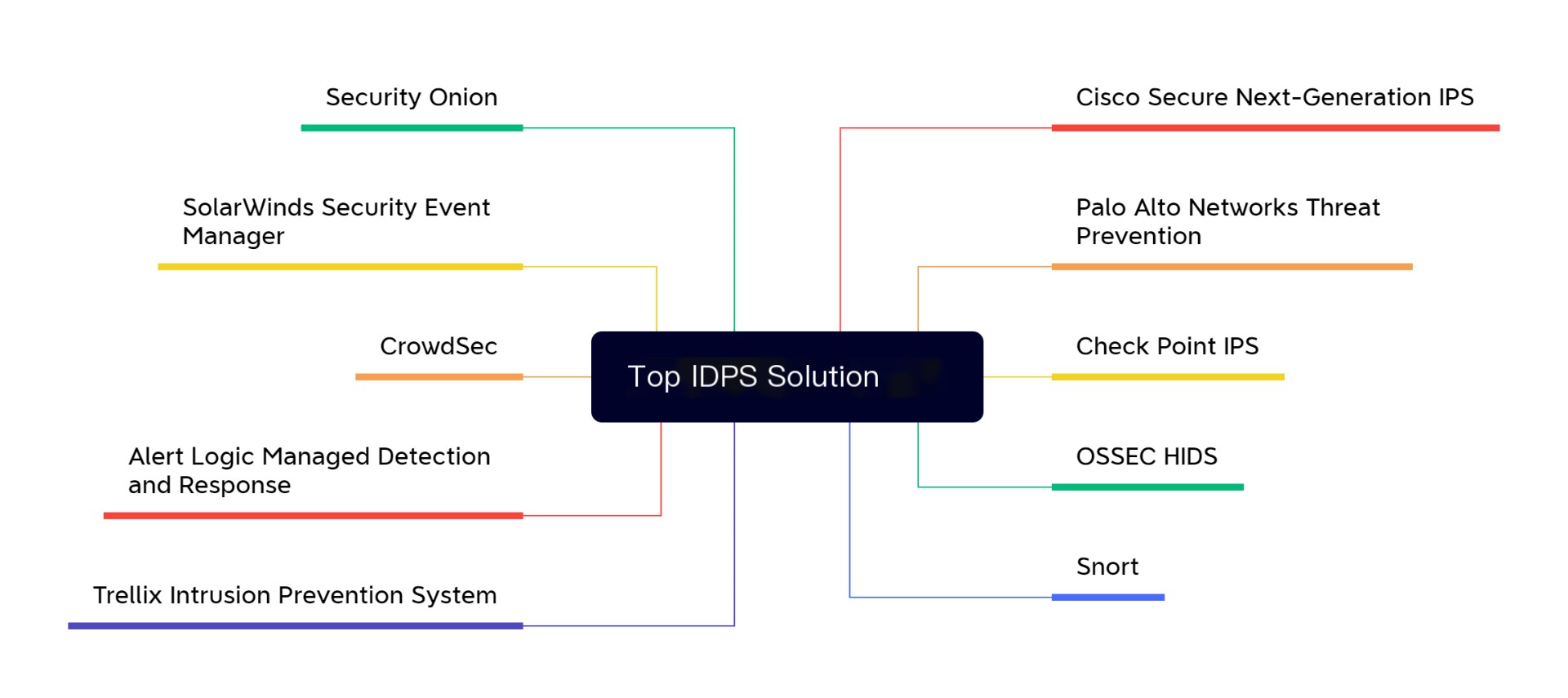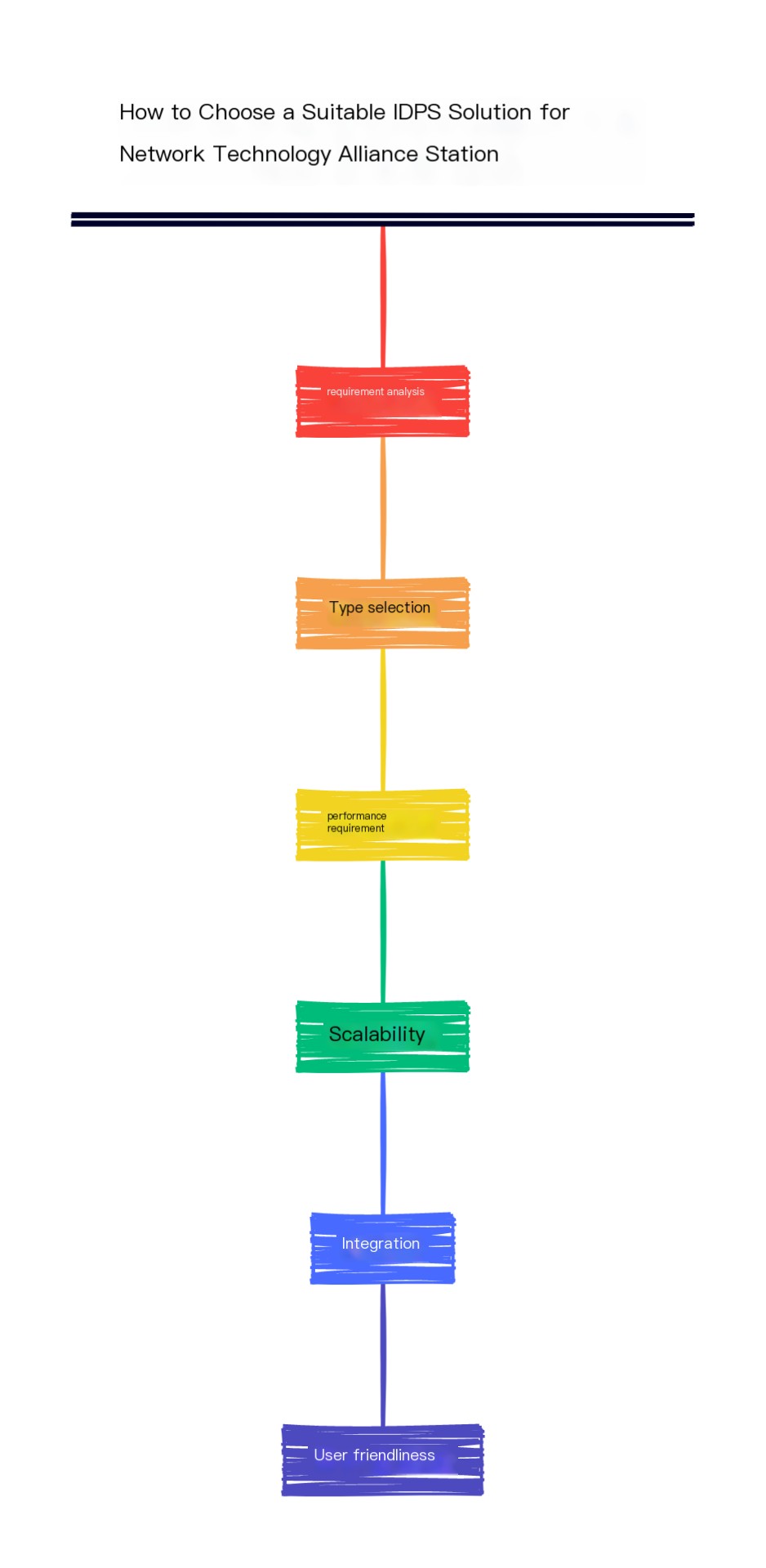Intrusion Detection and Prevention System (IDPS) is a category of critical network security tools designed to identify, block, and respond to malicious network activities and attacks. It plays a vital role in an ever-evolving threat environment, helping organizations protect their digital assets from various threats. This article will delve into the functions of IDPS, its different types, and some top IDPS solutions.
 >
>
Principles of Intrusion Detection and Prevention Systems (IDPS)
Intrusion Detection and Prevention: Traffic Monitoring and Real-Time Analysis
The first principle of IDPS is real-time traffic monitoring and analysis. It deploys sensors in the network to monitor incoming and outgoing data flows. These data flows may include network traffic, host event logs, application activities, etc. By deeply analyzing these flows, IDPS can identify abnormal behaviors and potential intrusions. This monitoring can occur at the network perimeter (Network Intrusion Detection/Prevention System, NIDS/NIPS) or on the host (Host Intrusion Detection/Prevention System, HIDS/HIPS).
2. Signature Detection in Intrusion Detection and Prevention: Searching for Known Threats
Signature detection is one of the important principles of IDPS. It is similar to the virus signature database used by antivirus software. IDPS uses signatures of known attacks, which are predefined patterns that trigger alerts when the traffic matches them. This method is suitable for attack types that have already been analyzed and categorized, such as common worms, viruses, etc.
3. Behavior Analysis: Intrusion Detection and Prevention by Identifying Anomalous Behaviors
In addition to signatures of known attacks, IDPS also uses behavior analysis to search for anomalous behaviors. It establishes a baseline of normal behaviors for the network and system, then monitors activities to detect behaviors that deviate from the baseline. For example, if a user suddenly starts downloading a large number of files, this may indicate anomalous behavior.
4. Intrusion Detection and Prevention: Searching for Unknown Threats
Unlike signature and behavior detection, anomaly detection aims to find unknown attacks that do not conform to any known pattern. It establishes statistical models of normal behavior and then detects activities that deviate from this model. This allows IDPS to identify zero-day attacks and unknown malware.
5. Intrusion Detection and Prevention: Sandbox Analysis – Dissecting Malicious Code
Some advanced IDPS employ sandbox analysis to thoroughly dissect malicious code and files. A sandbox environment is an isolated environment that allows malware to run without impacting the real environment. By analyzing the behavior of the malicious code, IDPS can gain more information about its purpose and impact.
6. Machine Learning and Artificial Intelligence in Intrusion Detection and Prevention: Identifying Emerging Threats
Modern IDPS increasingly use machine learning and artificial intelligence technologies. These systems can learn and adapt to identify emerging threats. They analyze large sets of data, identifying patterns and anomalies to recognize previously unknown attacks.
7. Intrusion Detection and Prevention: Protecting Network Security
IDPS is not just a detection tool; it can also take actions to respond to threats. Intrusion detection systems can trigger alerts, while intrusion prevention systems can proactively block malicious traffic. This helps to quickly stop attacks and minimize damage.
8. Intrusion Detection and Prevention: Integrating Real-Time Threat Intelligence
IDPS can integrate real-time threat intelligence to adjust rules and policies based on the latest threat information. This enables the system to better identify the latest attack patterns and improve detection accuracy.
9. Intrusion Detection and Prevention: Logging and Reporting for Supporting Investigation and Analysis
IDPS records detected events and activities, generating reports. This is crucial for security teams, helping them understand what happened and supporting subsequent investigation and response.
The Role and Importance of IDPS
The role of IDPS in network security is undeniable. They can monitor network traffic, logs, and system activities in real-time to find anomalous behaviors and potential intrusions. By identifying and acting to stop these threats, IDPS helps prevent data breaches, service disruptions, and malware spread. They also provide records and analysis of security events, aiding organizations in improving their security strategies.
Types of IDPS
 >
>
- Network Intrusion Detection System (NIDS): This type of IDPS monitors network traffic for signs that match known attack patterns. NIDS is typically deployed at network perimeters, such as behind firewalls, to monitor the entire network.
- Host Intrusion Detection System (HIDS): HIDS is deployed on individual hosts, monitoring activity on the host and detecting anomalies. It can monitor file changes, registry modifications, etc., to detect malicious behavior early.
- Network Intrusion Prevention System (NIPS): Similar to NIDS, but NIPS can not only detect threats but also proactively block malicious traffic to prevent attackers from successfully intruding into the network.
- Host Intrusion Prevention System (HIPS): Similar to HIDS, but HIPS can not only detect anomalies on the host but also take measures to block potential threats.
Top IDPS Solutions
Below are some top IDPS solutions in 2023 representing various types of IDPS technologies.

1. Cisco Secure Next-Generation IPS
Cisco Secure NGIPS is a leading network intrusion prevention system that utilizes deep learning and machine learning technologies to identify emerging threats. It integrates advanced threat intelligence to automatically block malicious traffic and provide real-time analysis.
2. Palo Alto Networks Threat Prevention
Palo Alto Networks’ Threat Prevention combines firewall and intrusion detection functionalities, providing a comprehensive network security solution. It uses advanced threat intelligence to monitor network traffic in real-time to prevent various attacks.
3. Check Point IPS
Check Point IPS employs a multi-layered protection strategy, including signature detection, behavior analysis, and sandbox analysis. It can identify known and unknown threats and provide rapid response measures.
4. OSSEC HIDS
OSSEC is an open-source host intrusion detection system that monitors host logs and file integrity to detect possible intrusion behaviors timely. It is highly customizable and suitable for various operating system environments.
5. Snort
Snort is a widely used open-source network intrusion detection system that can analyze network traffic in real-time and identify potential attacks. It supports custom rules and can be configured according to specific threat intelligence.
6. Trellix Intrusion Prevention System
Trellix IPS focuses on zero-day attacks and advanced threats, using behavior analysis and machine learning to detect anomalies in the network. Its intelligent algorithms can quickly identify new attack patterns.
7. Alert Logic Managed Detection and Response
Alert Logic provides managed detection and response services, integrating intrusion detection, log analysis, and threat intelligence. Their professional team helps organizations promptly identify and respond to threats, alleviating the pressure on internal teams.
8. CrowdSec
CrowdSec is an open-source intrusion detection and blocking system that uses community-driven threat intelligence sharing to block malicious traffic in real-time. Its learning ability allows it to continuously adapt to new attack techniques.
9. SolarWinds Security Event Manager
SolarWinds Security Event Manager integrates intrusion detection, log analysis, and compliance auditing functions. It can automatically monitor and analyze security events, helping organizations meet compliance requirements.
10. Security Onion
Security Onion is an open-source network security monitoring platform that integrates multiple tools and components to provide comprehensive intrusion detection and defense capabilities. It includes network intrusion detection, traffic analysis, log management, and other functions, helping organizations monitor and analyze network security events in real-time.
How to Choose the Right IDPS Solution
Selecting the right IDPS solution for an organization is an important and complex decision. Here are some considerations:

- Needs Analysis: First, clearly define the organization’s security needs. You need to understand your network structure, key assets, and threat intelligence to select the most suitable solution.
- Type Selection: Choose the appropriate IDPS type based on the organization’s needs. Is there more need for detection and defense at the network layer or the host layer?
- Performance Requirements: Consider the organization’s network traffic volume and performance needs. Some solutions may be suitable for small networks, while others may be suitable for large-scale enterprises.
- Scalability: Future expansion and upgrades also need to be considered. Ensure the chosen solution can adapt to future network growth and threat evolution.
- Integrability: If your organization already uses other security tools, ensure the chosen IDPS can seamlessly integrate with these tools to form a complete security ecosystem.
- User-Friendliness: Is the solution’s interface and operation easy to use? Does it provide good visualization and reporting capabilities?
Conclusion
In a constantly evolving threat environment, Intrusion Detection and Prevention Systems (IDPS) are becoming increasingly important. As the frontline of network security, they can help organizations quickly identify, block, and respond to malicious activities. By choosing the right IDPS solution, organizations can greatly enhance the security of their networks, protecting sensitive data and business continuity. From leading vendors like Cisco and Palo Alto Networks to open-source community-driven projects like Snort and Security Onion, there are various options available to meet different needs. Regardless of the solution chosen, continuous monitoring, updating, and optimization are key to ensuring the effectiveness of IDPS.


